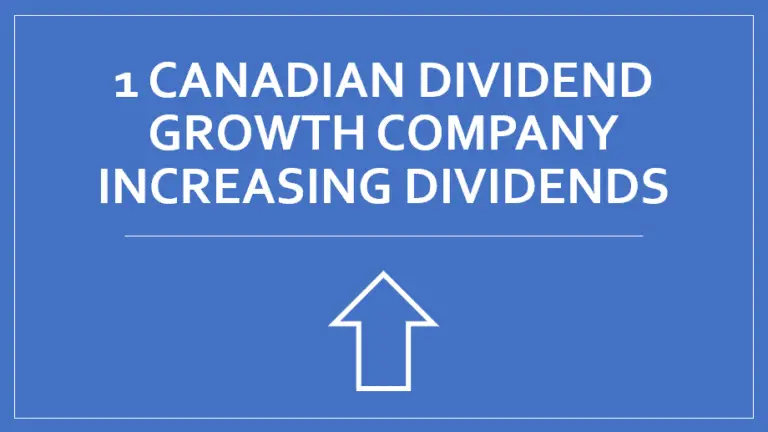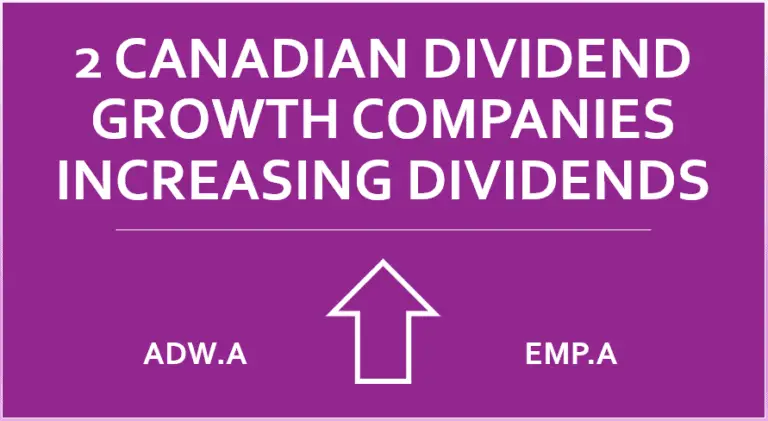Dividend Growth Investing & Retirement is supported by its readers through donations and affiliate links. If you purchase through a link on my site, I may earn a commission. Thanks! Learn more.
“Financial strength is the key requirement of a high-quality stock. […] Remember, you’re buying a piece of a business here, one that you want to live with for a long, long time.” (Miller, 2006)1
I recently read Lowell Miller’s The Single Best Investment: Creating Wealth with Dividend Growth. I would make this book required reading if I were teaching a course on dividend growth investing. What I like about this book is that it gives specific criteria to look for when trying to find a good dividend growth candidate. While the version I read was written in 2006, a lot still applies today.
The concept of the book is that high quality + high current dividends + high growth of the dividend = high total returns. A key element of a high quality company is financial strength. Today I’ll be sharing a few of the author’s different ways to identify financial strength.
Low debt
As a long term investor it is important to me that the company still exists in 10 years, 20 years, 30 years … well you get the idea. For a company to stand the test of time they have to be able to navigate through some tough times. Some companies like Johnson & Johnson [JNJ Trend Analysis], Coca-Cola [KO Trend Analysis], or Procter & Gamble [PG Trend Analysis] all have dividend streaks over 50 years. Having manageable debt levels is a key factor for companies like this to survive such a long time while increasing their dividend each year.
Related article: Wide Moat Stocks In The US Dividend Champions List
So what is an acceptable level of debt? In the book the author suggests a debt to equity (aka debt to capitalization) ratio of 50% or less. As a general rule of thumb most people want to see at least a debt to equity ratio of less than 100%, but because the author is looking for long term investments that will stand the test of time he targets the more conservative ratio of 50% or less.
The other factor the author mentions is the interest coverage ratio. Lowell Miller suggests an interest coverage ratio of at least 3:1. This ratio looks at a companies ability to pay its interest payments on its existing debt with its current earnings. A coverage ratio of 3:1 would mean that the company could pay off three times its existing interest expense with the income it is making. The lower the ratio the worse. In most cases if the interest coverage ratio is less than 1.5 then you should be getting worried. Ideally you want a company to be able to easily pay off its interest requirements which means a high coverage ratio.
Not everyone is an accountant and knows how to calculate these ratios from the financial statements, so I thought I share some free resources on where you can find these ratios.
- Morningstar: They offer a variety of free information for individual stocks that are nicely separated by tabs. In the “Key Stats” tab you will find a variety of different financial ratios. You can toggle between the different tabs within “Key Stats”. In the “Profitability” tab you’ll find the interest coverage ratio, and in the “Financial Health” tab you’ll find the debt to equity ratio.
- Thomson Reuters: When looking at the company information on Reuters click on the “Financials” tab, scroll down and you’ll see a “Financial Strength” section with these ratios displayed.
Other common debt related ratios are the current and quick ratios which Morningstar and Thompson Reuters also display. These ratios aren’t mentioned in the book, but generally speaking you want to see these ratios above 1.0. The higher the number the better and a current ratio above 1.5 is usually a better target than 1.0.
Every industry is different and companies treat debt differently depending on their needs, but in general most people will agree that less debt is better and no debt is the best. That being said I certainly wouldn’t screen out a company simply because it had some debt. We are looking for low, manageable levels of debt.
Side note: While these ratios can be useful they will vary depending on the industry. A good example is banks as they typically have very high debt to equity ratios. In these types of cases where something looks off, try and dig a little deeper or see if the company has a credit rating that you can use to assess financial strength. A bank’s financial statements can be complicated to decipher, which is why I’ll usually rely on a credit rating from S&P or an assessment from Value Line. I’ll talk more about this later.
Strong cash flow
Dividends are paid out of cash so it makes sense that you want to see a strong cash flow. Cash flow stems from the companies ability to make money so one of the first things you want to do is check earnings growth. Past returns are never a guarantee for future results, but I still like to look at the past 10 years to get an idea of what earnings have done. Ideally I’m looking for a minimum of 5-10% in consistent annual earnings growth. I highlighted consistent because for dividend growth investing to work, you need to have an increasing stream of income to pay for the increasing dividend. With this in mind I like to see a steady increase in earnings year after year. If earnings drop in one or two years out of the ten that’s OK, but what you want to see is an overall upward trend in earnings that for the most part has the company making more and more money each year.
A high quality company will make enough money to pay the dividend and also have money left over to reinvest in the company. If the company is spending all its money on the dividend then it won’t have any money left over to fuel growth in the company. This is why the company’s payout ratio is important. (The payout ratio is the dividend divided by earnings: Annual Dividend/EPS). The payout ratio tells you what percentage of earnings are used to pay the dividend. You should be looking for a payout ratio of 60% or less. This will provide a good balance between dividend payments and money left over for growth initiatives.
A few exceptions: With utilities and telecoms you can go slightly higher and aim for a payout ratio of 70% or less. REITs are a different type of investment, so for these use funds from operations (FFO) instead of EPS to calculate the payout ratio.
Short cuts
I’ve given you some specific targets to look for when assessing financial strength. Now that you have an idea of what to look for, I want you to ignore most of it… OK well maybe not ignore, but there is a quicker way to do the same thing. There are so many different companies and industries out there that it can be complicated to assess each company’s financial strength. While the ratios I’ve mentioned are useful tools, they won’t apply to all situations and all industries. Rather than learn all the different nuances of each industry and company, I would suggest using Value Line or Standard & Poor (S&P).
- Value Line rates financial strength on a grading scale. Mr. Miller (the author) suggests a grade of B+ or higher.
- With S&P you are looking for a minimum credit rating of BBB+.
Not all companies are rated by these two institutions, but a lot are. If the company isn’t rated then you can fall back on the ratios I discussed. One important note is that these ratings focus more on the debt side of things, so you still need to make sure that the company has a minimum of 5-10% consistent annual earnings growth, and a payout ratio of 60% or less.
Where to find Value Line and S&P information
Your public library will normally grant you free access to Value Line’s Investment Survey. This is a collection of stock reports on the roughly 1,700 companies they track. You’ll find the financial strength grade in the bottom right hand corner of the report. Some libraries even offer online access for free through the library’s online portal (Mine much to my frustration does not).
S&P credit ratings can viewed on their website for free, but you have to sign-up first. They won’t charge you, but you do have to login to see the credit rating.
Final thoughts
Financial strength can sometimes be overlooked in a good economy or thriving stock market because everyone is happy and nothing could wrong. Investing for the long term means having the foresight to realize that the good times won’t last forever. When the going gets tough, a financially strong company should be able thrive when others are scrambling. It’s during these times that you will be grateful that you picked a financially strong company to invest in.
FYI: Lowell Miller talks about financial strength in chapter 4 of the book1. If you have the hard copy take a look at pages 48 to 52.
Footnote/Reference:
1 Miller, L. (2006). The single best investment creating wealth with dividend growth (2nd ed.). Chicago: Independent Publishers Group.
Photo credit: kikikiliii / Foter / Creative Commons Attribution-NonCommercial-NoDerivs 2.0 Generic (CC BY-NC-ND 2.0)
Newsletter Sign-Up & Bonus

Have you enjoyed our content?
Then subscribe to our newsletter and you'll be emailed more great content from Dividend Growth Investing & Retirement (DGI&R).
BONUS: Subscribe today and you'll be emailed the most recent version of the Canadian Dividend All-Star List (CDASL).
The CDASL is an excel spreadsheet with an abundance of useful dividend screening information on Canadian companies that have increased their dividend for five or more years in a row.
The CDASL is one of the most popular resources that DGI&R offers so don't miss out!






![Screening the Canadian Market for the #1 Dividend Growth Utility Stock [Spreadsheet included]](https://dividendgrowthinvestingandretirement.com/wp-content/uploads/2018/05/Canadian-Utility-Dividend-Growth-Screen-Cover.png)
![How to estimate dividend growth and total returns using Josh Peters’ Dividend Drill Return Model [Example & Spreadsheet]](https://dividendgrowthinvestingandretirement.com/wp-content/uploads/2018/10/How-to-estimate-dividend-growth-and-total-returns-using-Josh-Peters’-Dividend-Drill-Return-Model-Cover-768x575.png)

Good article! I’d add Stephen Jarislowsky’s The Investment Zoo and Josh Peter’s The Ultimate Dividend Playbook to the reading list.
For us Canadian investors and for those who wish to have a core of Cdn stocks, the list is not extensive and not difficult to find the All Stars. However, I would not exclude companies which have not increased their dividend every year. A good example are the major banks. Many have paid a dividend since the 1800’s and increased their dividend over the years. The financial crisis forced them to hold the increases, but none cut and they are back to increasing them again.
I agree about the core Canadian stocks as the banks are considered dividend growth staples in Canada.